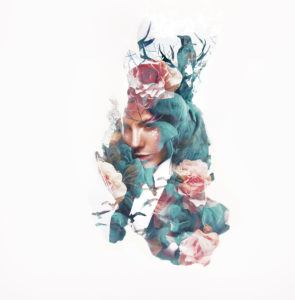
The Indigenous cultures of the Americas all have unique traditions and mythologies, but many closely related civilizations frequently shared customs, belief systems, and stories. Some of the same legends can be found among groups that lived throughout most of Canada as well as the Great Plains and Eastern regions of the United States. Often depicted as a formidable and sometimes vengeful being, Deer Woman is one figure regarded with both fear and awe throughout much of Turtle Island.
Why Was Deer Woman Feared?
In a 2013 article for interdisciplinary feminist journal Femspec, writer Kurt Russow discussed the Deer Woman legends found in multiple Indigenous cultures:
- The Sioux, especially the Lakota and Dakota
- The Iroquois and related groups, including the Cherokee Nation
- Muskogean cultures such as the Muskogee, Seminole, and Choctaw
- Ponca and Omaha cultures
- The Ojibwa
While these tales are common among several civilizations, Russow comments that not many have found their way into print. Indeed, such stories have been primarily spread through oral tradition and were mostly told to both young adults and adolescents soon to come of age. As a shape shifting being who appears to young men as a mortal woman, her true form is that of a deer. According to a brief description of her legends available from Native Languages of the Americas, some claim that her primary goal is to lure promiscuous or adulterous men to an untimely end.
Cautionary Tales for Young People
Scholar Carolyn Dunn discusses the Deer Woman stories in a 2003 article published in the Journal of Mythical Arts. Dunn explains that she is regarded as one of the Little People, or a class of supernatural entities such as leprechauns, gnomes, and fae. Their chief purpose, she clarifies, is to teach humans that power must be respected and used wisely or there will be dire consequences to face.
Dunn also mentions that Deer Woman was originally associated with love and fertility. In their original context, her stories were meant to emphasize the importance of choosing a mate wisely and to avoid being misled by infatuation or lust. During chance encounters with an unfamiliar woman, young men were warned to check her legs. Hooves instead of human feet signaled that she was Deer Woman attempting to entice the man and bring him to an early grave.
Is Deer Woman Seeking Retribution?
Although cautionary tales about reckless pursuits of pleasure may have been one function of the Deer Woman myths, some modern Native women are viewing them through a feminist lens. Vox writer Tara Isabella Burton discusses artist Katelan Foisy’s creation of a Deer Woman ritual. Foisy reveals that Deer Woman was assaulted and left for dead in some versions of the legend, which is why she attempts to entrance men and lead them to their demises. Her ritual focuses on calling upon Deer Woman for aid and for her ancestors to “rise up and expose the truth.”
Unsurprisingly, Deer Woman is also associated with survival and resilience. A Kickstarter-funded collection, “Deer Woman: An Anthology,” heavily emphasizes this aspect of her mythos. Addressing the disproportionately high rates of Native women who suffer domestic violence and sexual assault, the collection’s creators and contributing artists came together to offer narratives focused on healing, resistance, and hope.
A Timeless Figure With Important Lessons
Deer Woman is a terrible figure from older legends, but her deeds and personality are gaining new relevance and symbolic meaning among some modern Native people. For some, she is a cautionary figure warning against the misuse of power and perhaps the critical importance of consent. To others, she is a symbol of the will to survive as well as the vital need for justice and truth to prevail.

